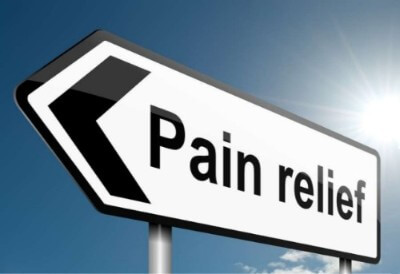
Painkillers are undoubtedly extremely effective when used at the right time and in the correct dose. However, when used for prolonged periods of time, and without frequent medical supervision, they
can lose their effect as well as increase the risk of side effects.
For example:
- Paracetamol taken over long periods of time and with alcohol consumption, will increase the risk of liver damage.
- Non steroidal anti- inflammatories like Ibuprofen, will increase the risk of gastric bleeds, cardio vascular issues and increase the risk of asthma.
- Stronger medications carry the risk of addiction.
There are very effective, drug free alternatives to pain management, with no side effects! Below I aim to outline some of these for the various presentations of pain.
Acute Pain
 Acute pain, of recent onset as a result of trauma. A sprained ankle is a good example of this and can be treated very effectively without drugs. In order to heal, you simply need to protect the damaged area by resting/supporting it, applying ice, using compression and elevation for as little as 2-4 days. Gentle movement within pain is good for soft tissue strains.
Acute pain, of recent onset as a result of trauma. A sprained ankle is a good example of this and can be treated very effectively without drugs. In order to heal, you simply need to protect the damaged area by resting/supporting it, applying ice, using compression and elevation for as little as 2-4 days. Gentle movement within pain is good for soft tissue strains.
For further information you can download a patient advice leaflet.
 Pain lasting longer then 2 weeks
Pain lasting longer then 2 weeks
Depending on which tissue, and to what extent it has been affected, will determine the length of the recovery period.
Low grade ‘strains and sprains’ will recover within a week or two. Extensive bruising or acute onset lower back pain, may signify a longer period of recovery of 6-8 weeks with the appropriate initial management followed by a graduated
exercise programme for fluid confident mobility and strength.
Therapeutic Intervention – Physio. Works !!
Effective Drug free pain relief modalities include:-
- Hands on massage, mobilisation and manipulation
- Heat packs/patches
- Interferential and TENS
- Ultrasound
- Acupuncture
- Relaxation and reassurance
 Chronic Pain
Chronic Pain
Chronic pain is categorised as pain lasting for longer than the usual healing time for the involved tissue. ie. pain lasting more than three months from initial onset, Chronic pain is mediated via the central nervous system. “A brain phenomena”, it can be sparked off for no apparent reason. Light touch or changes in temperature may upset it. Stress, worry or fear can make it worse.
In this situation, carefully managed medication alongside an effectively paced rehabilitation programme, including graded exposure back to your activities of daily living, is the best way forward to recovery.
Action & Solution!
- Firstly in this situation, the individual needs to fundamentally understand chronic pain.
Click here to watch our video which explains pain in under five minutes. - Recognise any unhelpful thoughts, beliefs, fears about the pain and discuss them with your Physiotherapist.
- Identify any behaviour patterns/side effects that may have developed as a result of having long term pain and make a plan as to how to address and change them. For example:
Fear avoidance
- Avoiding house work, sport, bending, lifting
Developing
- Sleep disturbance
- Anxiety
- Depression
- Sick leave from work
- Social and family difficulties
- Isolation/drug dependency
- Self manage – take control!
Tips for self help:
- Improve your general health and well being:
- Have a laugh
- Eat better
- Drink less
- Meet friends
- Pursue a hobby
- Join a small gentle exercise class such as Pilates, Yoga or Tai Chi (one that concentrates on mind/body connection and relaxation)
Scientific
Evidence of good quality proves that moving with confidence and freedom of movement is vital for pain rehabilitation. The Pain Toolkit – download it and do it!
IF YOU CAN’T GO IT ALONE…
That’s OK, we are here to help with evidence based, therapeutic interventions. Give us a call on 0800 9881797 or contact us and one of our Chartered Physiotherapists will be more than happy to offer advice.

